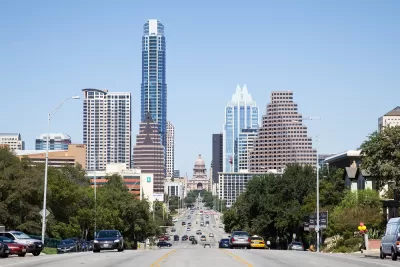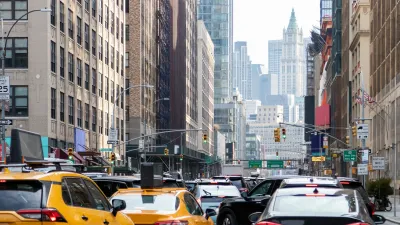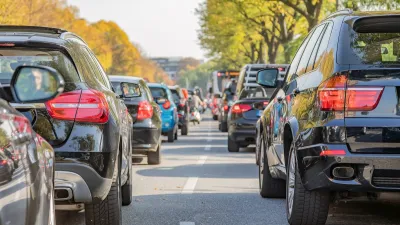A local blogger takes umbrage with claims that Austin's density is causing its traffic problems. The obvious problem with that argument: Austin is 68% as dense now as it was in 1950.

A post by Carrie Gammell at Car Free Austin argues against the idea that Austin's traffic problems are created by density alone: "While it may appear that our present-day city is more crowded and the traffic less manageable, that feeling of encroachment is most certainly due not to an increase in people but to an increase in cars, an increase in asphalt."
In a key passage, Gammell cites both the prevailing rhetoric about traffic in Austin, as well as the inherent irrationality of such arguments:
It seems that local media outlets constantly bemoan the statistic that 110 people move to Austin on an average day. Tall buildings, skyscrapers, 10-to-50-story buildings full of people are presumably to blame. Meanwhile, the city is still not as dense as it was in 1950, 1960, 1970, or 1980.
In fact, 2015 Austin is only 68% as dense as 1950 Austin.
The post offers a lot more detail about the city's planning and transportation decisions of the late-20th century and a collection of historic aerial photos.
Hat tip to Angie Schmitt at Streetsblog USA for finding and sharing the post.
FULL STORY: Density Does Not Cause Traffic

Study: Maui’s Plan to Convert Vacation Rentals to Long-Term Housing Could Cause Nearly $1 Billion Economic Loss
The plan would reduce visitor accommodation by 25,% resulting in 1,900 jobs lost.

North Texas Transit Leaders Tout Benefits of TOD for Growing Region
At a summit focused on transit-oriented development, policymakers discussed how North Texas’ expanded light rail system can serve as a tool for economic growth.

Why Should We Subsidize Public Transportation?
Many public transit agencies face financial stress due to rising costs, declining fare revenue, and declining subsidies. Transit advocates must provide a strong business case for increasing public transit funding.

How to Make US Trains Faster
Changes to boarding platforms and a switch to electric trains could improve U.S. passenger rail service without the added cost of high-speed rail.

Columbia’s Revitalized ‘Loop’ Is a Hub for Local Entrepreneurs
A focus on small businesses is helping a commercial corridor in Columbia, Missouri thrive.

Invasive Insect Threatens Minnesota’s Ash Forests
The Emerald Ash Borer is a rapidly spreading invasive pest threatening Minnesota’s ash trees, and homeowners are encouraged to plant diverse replacement species, avoid moving ash firewood, and monitor for signs of infestation.
Urban Design for Planners 1: Software Tools
This six-course series explores essential urban design concepts using open source software and equips planners with the tools they need to participate fully in the urban design process.
Planning for Universal Design
Learn the tools for implementing Universal Design in planning regulations.
City of Santa Clarita
Ascent Environmental
Institute for Housing and Urban Development Studies (IHS)
City of Grandview
Harvard GSD Executive Education
Toledo-Lucas County Plan Commissions
Salt Lake City
NYU Wagner Graduate School of Public Service





























